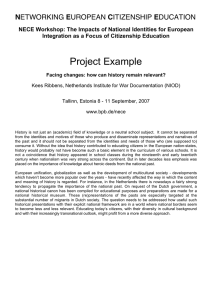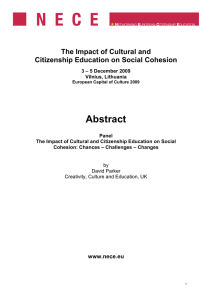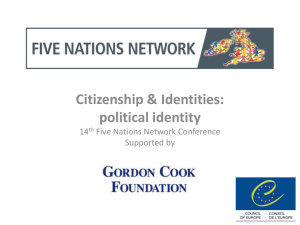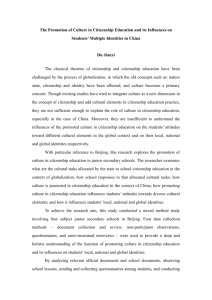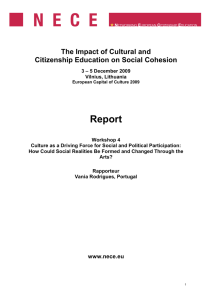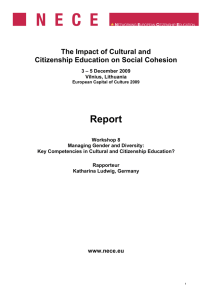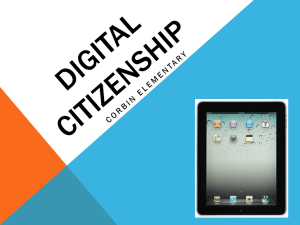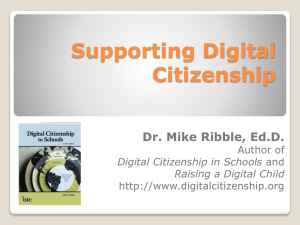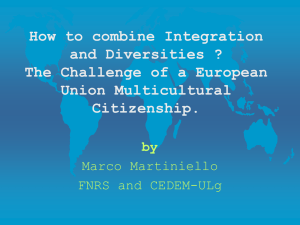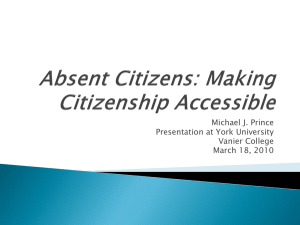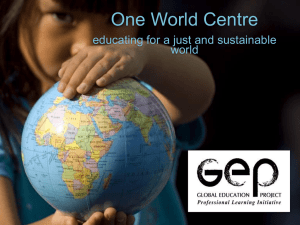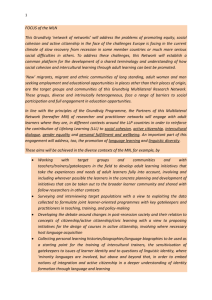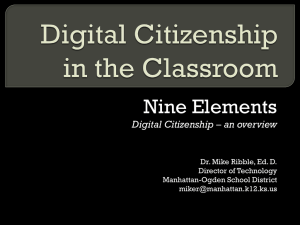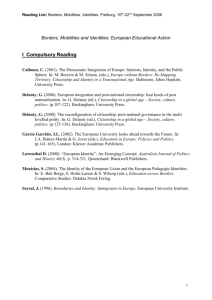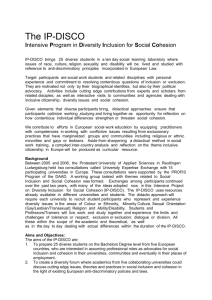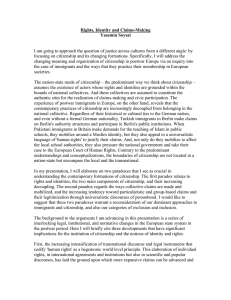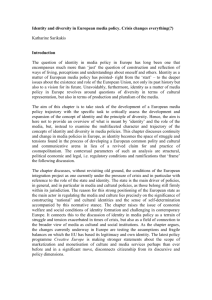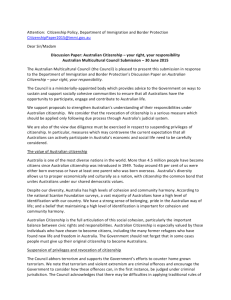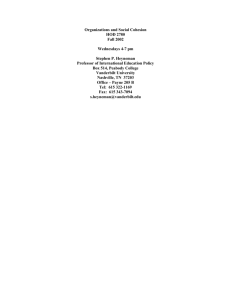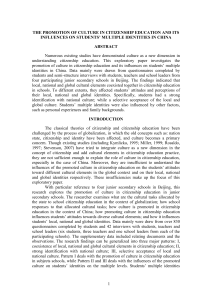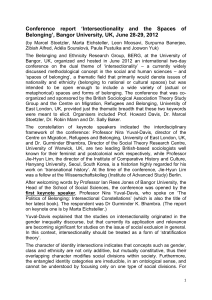Click here to the presentation accompanying the workshop.
advertisement
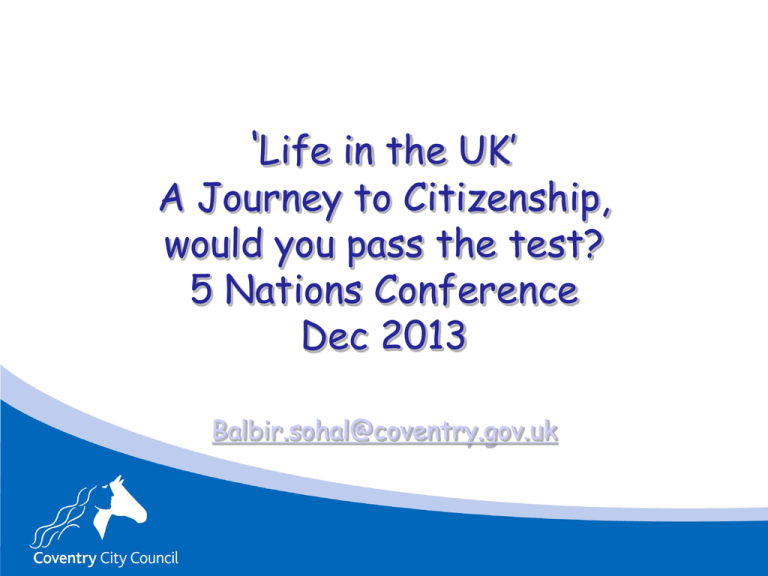
‘Life in the UK’ A Journey to Citizenship, would you pass the test? 5 Nations Conference Dec 2013 Balbir.sohal@coventry.gov.uk New Life in the UK Test 2013 • The website has been designed for UK citizenship seekers who want to get ready to take the Life in the UK test. • Our British citizenship practice tests are made so easy for UK citizenship applicants that even an amateur to computers or English will find it easy to face • It doesn’t matter if your English is poor or you lack basic computer skills. Do you want to have a go? • http://www.britishcitizenshiptest.co.uk/fr ee-sample-test.aspx Who do you think you are? My identity today? ‘Nations and peoples are largely the stories they feed themselves. If they tell themselves stories that are lies, they will suffer the future consequences of those lies. If they tell themselves stories that face their own truths, they will free their histories for future flowerings.’ Ben Okri Aims of the session •To explore the concepts of diversity, identity and community cohesion, • How do schools know they are addressing SMSC •To reflect on practical ideas which can be used with children and young people Why? Learning about identity and cultural diversity can help young people to live and work together in diverse communities in their country and the wider world. It can also help them develop their identity and a sense of belonging, which are fundamental to personal wellbeing and the achievements of a flourishing and cohesive society. What role do we as citizenship practitioners have? to support many communities? to promote positive identities? to welcome the new? to welcome diversity of all kinds? to act positively to promote this pluralist view? to deliver political literacy? Reflection Can you think of an example in your setting that would support Citizenship and identities? What role do schools have? Schools are central community institutions Shape children and young people’s experiences of each other and of the adult world Model positive values of cohesion & inclusion Help children & young people join and establish identities Help children & young people talk about cohesion and kinds of difference Know how children & young people are doing Where? Teacher interaction Student interaction School policies and practice Active citizenship programs Involving local community Teacher/facilitator interaction ... • Active learning approaches - Games, quizzes, stories and testimony, surveys and media projects • Peer mentoring & group work • Listening to diverse voices & stories • Using a wide range of literature • Empathy & empowerment - Using role play/ problem solving • The development of trust between young people • Communicative skills to be explicitly taught and promoted • Developing knowledge & understanding: legal/human rights, public discourse, political literacy Identities and diversity “Everywhere, cultural identities are emerging which are not fixed, but poised, in transition between different positions; which draw on different cultural traditions at the same time: and which are the product of those complicated cross-overs and cultural mixes which are increasingly common in a globalised world.” (S. Hall, The Question of Cultural Identity in “Modernity and its Futures”, Polity Press, OU, 1992) Community Cohesion “Working towards a a society in which there is a common vision and sense of belonging by all communities; a society in which the diversity of people’s backgrounds and circumstances is appreciated and valued; a society in which life opportunities are available to all; and a society in which strong and positive relationships exist and continue to be developed in the workplace, in schools and in the wider community”. Alan Johnson November 2006 Defining & Understanding Community Cohesion • Shared values a common vision for society • A sense of belonging by all communities • The diversity of people’s backgrounds appreciated & valued • Equal and fair life opportunities available to all • Strong and positive relationships • Knowing responsibilities & rights • Trust in each other, schools & local institutions Some of the challenges the Duty seeks to address • East European background pupil in a rural comprehensive: ‘I see Africa as poor, Asia as a famine and war zone, Eastern Europe as second class and England having snobby whites and poor blacks.’ WHERE DO I FIT IN? • A black pupil: ‘I live in London- it’s my home. My parents are from the Caribbean. I’m a Christian, but I’m E17- that’s where I hang, they’re my people. That’s who I am.’ GANG CULTURE • A white pupil: ‘I’m not from a Caribbean country or an exotic country. I’m from nowhere like that, I’m just plain English.’ WHITE WORKING CLASS ISOLATION • A Head in a largely white area: ‘We have no problem here. We have a very low percentage of children from different cultural and ethnic backgrounds. We’re very wary of the Duty becoming a contrived situation.’ MISREPRESENTATION Silent Dialogue Theme : Diversity & Identity Picture perfect What is ‘Britishness?’ Reflection What can you take back to school from today and implement to enhance your work with the students around diversity & identity within a citizenship framework? ‘If you take skins and stuff off, we are all the same.’ (Primary students)
